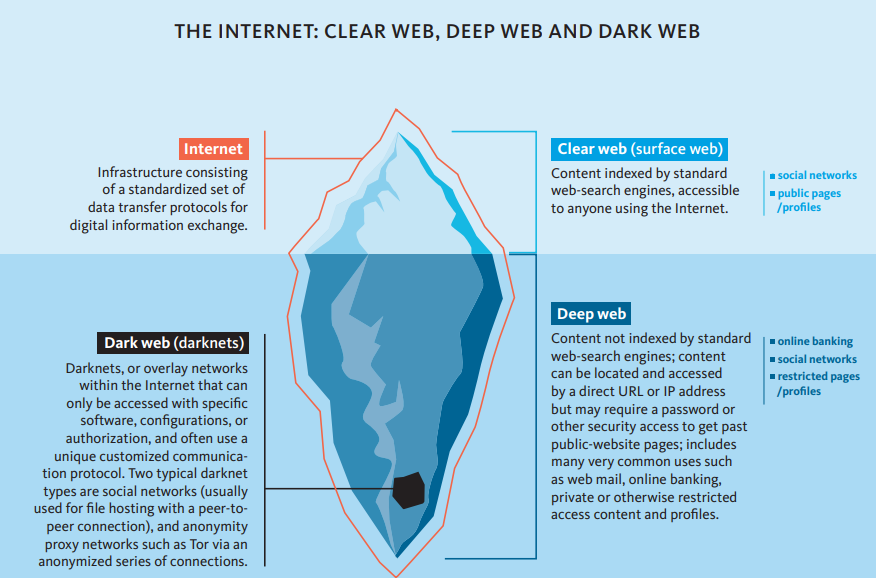Internal Security
The World Drug Report 2021: UNODC
- 26 Jun 2021
- 6 min read
Why in News
Recently, the United Nations Office on Drugs and Crime (UNODC), in its World Drug Report 2021, has highlighted that the lockdown restrictions during Covid-19 have accelerated drug trafficking using the Internet.
- By drugs, the Report refers to substances controlled under international drug control conventions, and their non-medical use.
Key Points
- Data Analysis:
- Between 2010-2019, the number of people using drugs increased by 22%, owing in part to an increase in the global population.
- Around 275 million people used drugs worldwide last year, while over 36 million people suffered from drug use disorders.
- Opioids continue to account for the largest burden of disease attributed to drug use.
- A rise in the non-medical use of pharmaceutical drugs was also observed during the coronavirus pandemic.
- Cannabis is More Potent but Fewer Young People See it as Harmful:
- In the last 24 years, cannabis potency had increased as much as four times in some parts, even as the percentage of adolescents who perceived the drug as harmful fell by as much as 40%.
- The major psychoactive constituent in cannabis, Δ9-THC, is responsible for the development of mental health disorders, in the long-term.
- Reason: Aggressive marketing of cannabis products and promotion through social-media channels.
- In the last 24 years, cannabis potency had increased as much as four times in some parts, even as the percentage of adolescents who perceived the drug as harmful fell by as much as 40%.
- Rising Web-based Sales Could Transform Global Drug Use Patterns:
- Access to drugs has also become simpler than ever with online sales, and major drug markets on the dark web are now worth some $315 million annually.
- In Asia, China and India are mainly linked to shipment of drugs sold on the 19 major darknet markets analysed over 2011-2020.
- Cannabis dominates drug transactions on Dark web and on clear web involves sale of Narcotic Drugs and Psychotropic Substances (NDPS) and substances used in the manufacture of synthetic drugs.
- Impact of Covid-19:
- Socio Economic impact:
- The Covid-19 crisis has pushed more than 100 million people into extreme poverty, and has greatly exacerbated unemployment and inequalities, as the world lost 255 million jobs in 2020.
- Mental health conditions are also on the rise worldwide. Such socioeconomic stressors have likely accelerated demand for the drugs.
- Positive Trend:
- A rise in the use of technology during the pandemic has also triggered innovation in drug prevention and treatment services, through more flexible models of service delivery such as telemedicine, enabling healthcare professionals to reach and treat more patients.
- The number of new NDPS emerging on the global market fell from 163 in 2013, to 71 in 2019.
- The pharmaceutical opioids used to treat people with opioid use disorders have become increasingly accessible, as science-based treatment has become more broadly available.
- Socio Economic impact:
- Reasons for Increase in Drug Use:
- Drug traffickers have quickly recovered from initial setbacks caused by lockdown restrictions and are operating at pre-pandemic levels once again.
- It is driven in part by a rise in the use of technology and cryptocurrency payments, operating outside the regular financial system.
- Contactless drug transactions, such as through the mail, are also on the rise, a trend possibly accelerated by the pandemic.
- Vendors play a cat-and-mouse game with law enforcement by marketing their products as “research chemicals” or advertising “custom synthesis”.
- Drug traffickers have quickly recovered from initial setbacks caused by lockdown restrictions and are operating at pre-pandemic levels once again.
- Suggestions:
- Combating misinformation on the impact of the use of cannabis products is crucial.
- Awareness-raising and communication efforts that disseminate scientific information without stigmatizing people.
- Increasing the capacity of law enforcement agencies to address drug trafficking over the darknet remains a priority.
- Joint responses by Governments and the private sector can involve controlling and removing advertisements and listings of illegal drugs on the Internet.
- Continuously update scientific standards to keep abreast of the acceleration of Internet-based services.
United Nations Office on Drugs and Crime
- It was established in 1997 and was named as a United Nations Office on Drugs and Crime (UNODC) in 2002.
- It acts as the Office for Drug Control and Crime Prevention by combining the United Nations International Drug Control Program (UNDCP) and the Crime Prevention and Criminal Justice Division of the United Nations Office at Vienna.
Relate International Initiatives
- International Day Against Drug Abuse and Illicit Trafficking is celebrated every year on 26th June.
- Single Convention on Narcotic Drugs, 1961.
- The Convention on Psychotropic Substances, 1971.
- The United Nations Convention against Illicit Traffic in Narcotic Drugs and Psychotropic Substances, 1988.
- India is a signatory to all three and has enacted the Narcotics Drugs and Psychotropic Substances (NDPS) Act, 1985.
Vulnerability of India
- India is vulnerable to the trafficking of narcotics as it is sandwiched between the 'Golden Crescent' and the 'Golden Triangle', the major opium production regions in the world.
- The Golden Crescent region of the South comprises Afghanistan, Iran and Pakistan. The Golden Triangle is the area where the borders of Thailand, and meet at the confluence of the Ruak and Mekong rivers.


.png)



